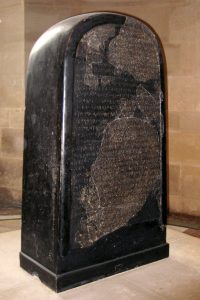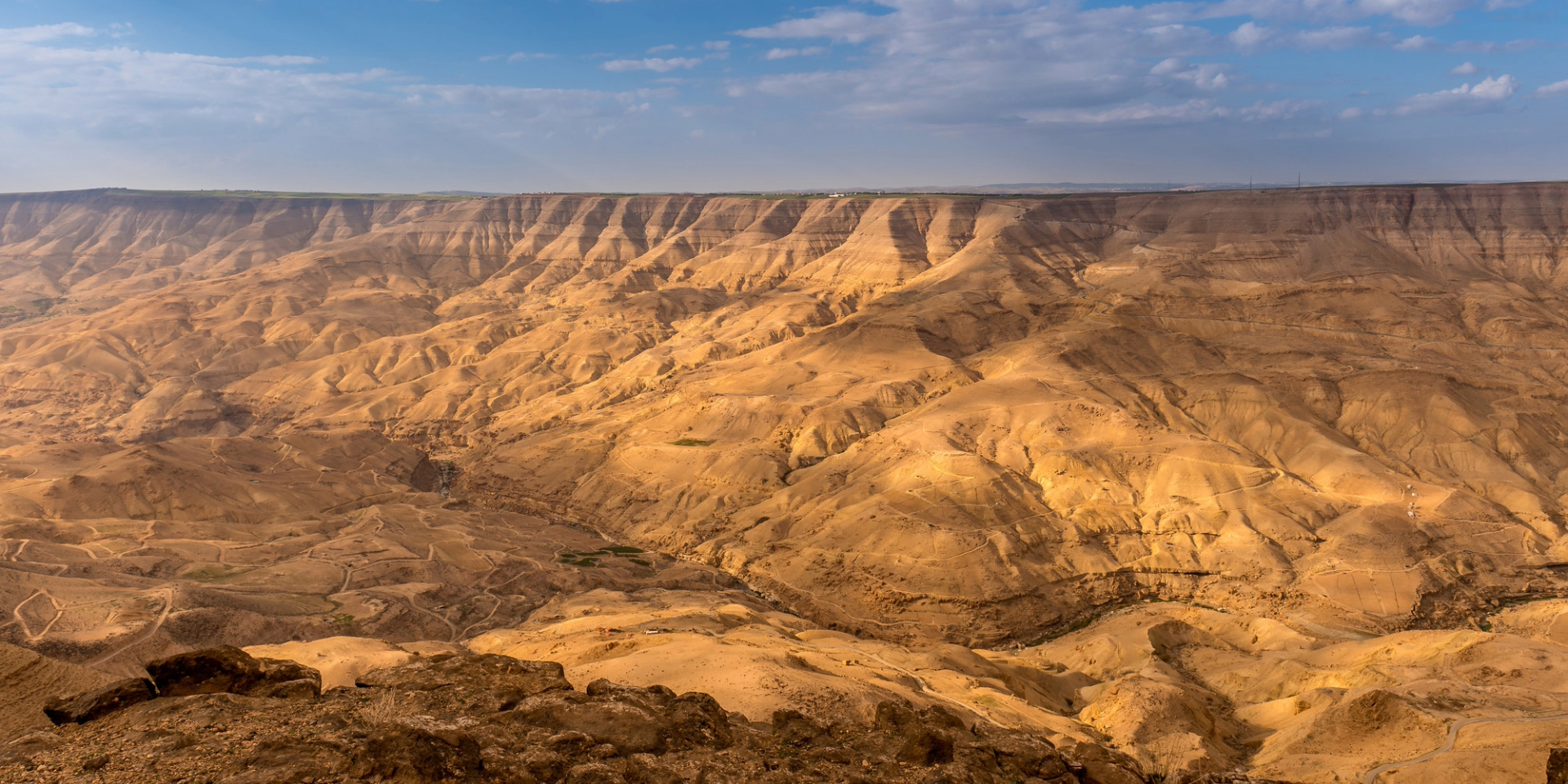A black basalt stone found in the desert of Jordan has an inscription with the earliest known use of the name of Yahweh (one of the many names for the Old Testament God). It is one of many ancient items which confirm biblical history.
A Frenchman by the name of Frederick Klein was the first European to see the stone. Unfortunately, he was also the last one to see the stele[1] in one piece. The stone is now on display in the Louvre museum in Paris. If you visit it today, you’ll see that the stone has been broken into many pieces. It wasn’t through some natural event or accident—the stone was damaged on purpose by the Bedouins (a nomadic people group native to the Israelite Negev desert).
Despite its fragmentary state, it is still an extremely important historical item. Archaeologist Siegfried Horn said, “Its importance as an ancient monument can hardly be overemphasised.” Today, the destruction of cultural objects is not only considered a crime, but thought of by many as an attack on humanity’s past. Such sentiments were not present when the Bedouins of Dhiban decided to destroy the monument.
A story of destruction
Frederick Augustus Klein was an Anglican missionary who began his ministry in Israel in 1851. In 1868, he travelled on horseback to Jordan, to the village of Dhiban. Dhiban is situated four kilometres north of the Wadi Mujib, a deep canyon where the biblical river Arnon flows towards the Dead Sea. When he arrived in the village, he was shown a stele about one metre tall lying on its back with text engraved on its face. Klein checked the back to see if there was an inscription on both sides but there was not.

Klein realised that the stone was an important object and the Berlin Museum tried to purchase it from the Bedouins living in the area. However, they asked an impossibly high price for it. France, Britain and Germany all began a competition to recover the stele for themselves. Eventually, the Turkish government got involved and was ready to send soldiers to claim it by force. The Bedouins were so enraged that they broke the stone in pieces by heating it with fire and pouring cold water on it. The pieces were distributed among Bedouin families.
Over the years, three people were able to obtain 57 fragments of the stone, which represents about two-thirds of the original. It would have been a very difficult task to put the pieces together had it not been for the fact that in 1869, a man by the name of Yacub Karavaca created a paper squeeze of the inscription. He did this by pressing wet paper onto the monument and peeling it off after it dried. Unfortunately, it was not of very good quality because while Karavaca was performing the squeeze, a fight broke out among the Bedouins and Karavaca tore off the paper before it had dried, fleeing for his life. Even though the wet paper Karavaca had squeezed tore in several pieces as he fled, it became the guide to fit the broken pieces together and determine what the rest of the inscription was.
Today, this stone is known as the “Moabite Stone” or “Mesha Stele.” Both terms are references to the Moabite king by the name of Mesha who had the monument and inscription made.
War propaganda
So, what does the Moabite Stone actually say? The stele was written in Phoenician script and dated to about 840 BC. It is a description of how King Mesha of Moab revolted against the king of Israel and conquered several Israelite cities. The text is a parallel to the biblical account found in 2 Kings 3. The authors of 2 Kings record that Joram became king of Israel after Ahab: “after Ahab died, the king of Moab rebelled against the king of Israel” (2 Kings 3:5). The Moabite Stone gives the Moabite version of this rebellion. Undoubtedly, the monument was made to strengthen Moabite identity and remind the people of the sovereignty of the king. It can best be described as a piece of propaganda. Joram, the king of Israel, did not want the rebellion by Moab to succeed. He went to war against Moab and enlisted the help of Jehoshaphat, the king of Judah, in addition to the king of Edom, the nation just south of Moab. The three kings attacked Moab from the south—a strategy probably chosen because the northern border of Moab was cut by a huge gorge where the Arnon river flows. Even today, Wadi Mujib, the current name of the canyon, is a border between two administrative divisions of the country of Jordan. The Madaba Governorate is in the north and the Karak Governorate to the south of the canyon.
In the biblical text, we are told that Mesha ultimately lost and as a result paid “a tribute of a hundred thousand lambs and the wool of a hundred thousand rams” (2 Kings 3:4). The stele corroborates this detail.

Biblical significance
In line 18 of the text, Yahweh is mentioned in contrast to the Moabite god Ashtar-Kemosh. The name of Yahweh is spelled the same way that it is spelled in the Hebrew Bible. This is the earliest use of the name of Yahweh in any known text, including the biblical text. The text of the Moabite Stone also confirms that the tribe of Gad lived in the area north of the Arnon river (Wadi Mujib), as recounted in Deuteronomy 3:12. It’s the longest Iron Age inscription found in the area, which makes it culturally and historically significant outside of its biblical importance. It’s one of four contemporary texts that reference the nation of Israel and it’s a wonderful example of Moabite language and culture. The Mesha Stele or Moabite Stone is a clear confirmation by a contemporary text outside the events described in the Bible. As such, it places the biblical text within a historical context—a context that can be verified through external pieces of evidence.
If you are in Paris, make sure to visit the Louvre and find your way to the Palestine and Transjordan collection in hall 303 to admire the Moabite Stone and consider its dramatic history.
If you (like me) are a reader of the Bible, perhaps the most exciting implication of this text is that we are still participating in its history.
Tor Tjeransen is the communication director for the Seventh-day Adventist Church in Norway. A version of this article first appeared on the Signs of the Times Australia/New Zealand website and is republished with permission.














